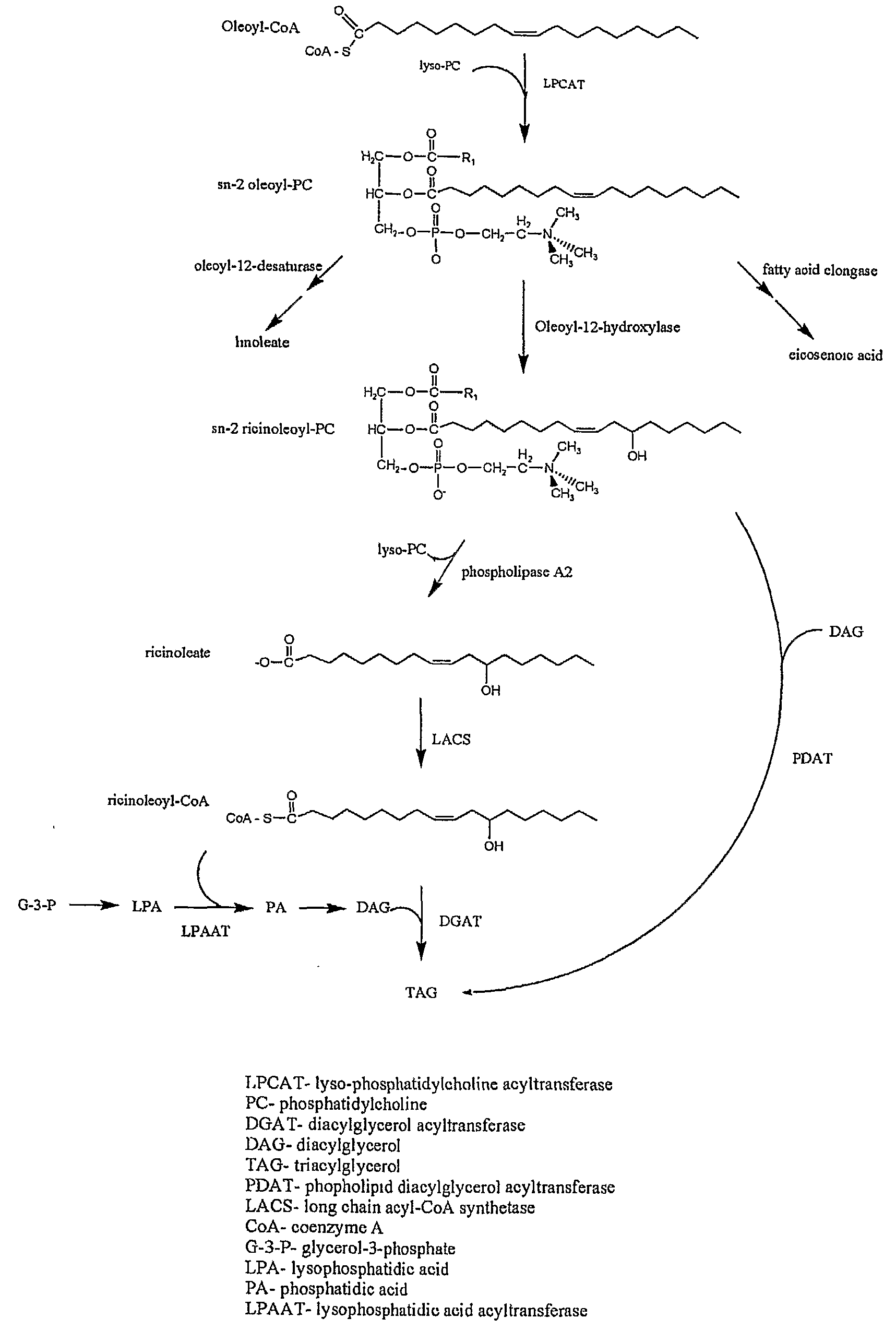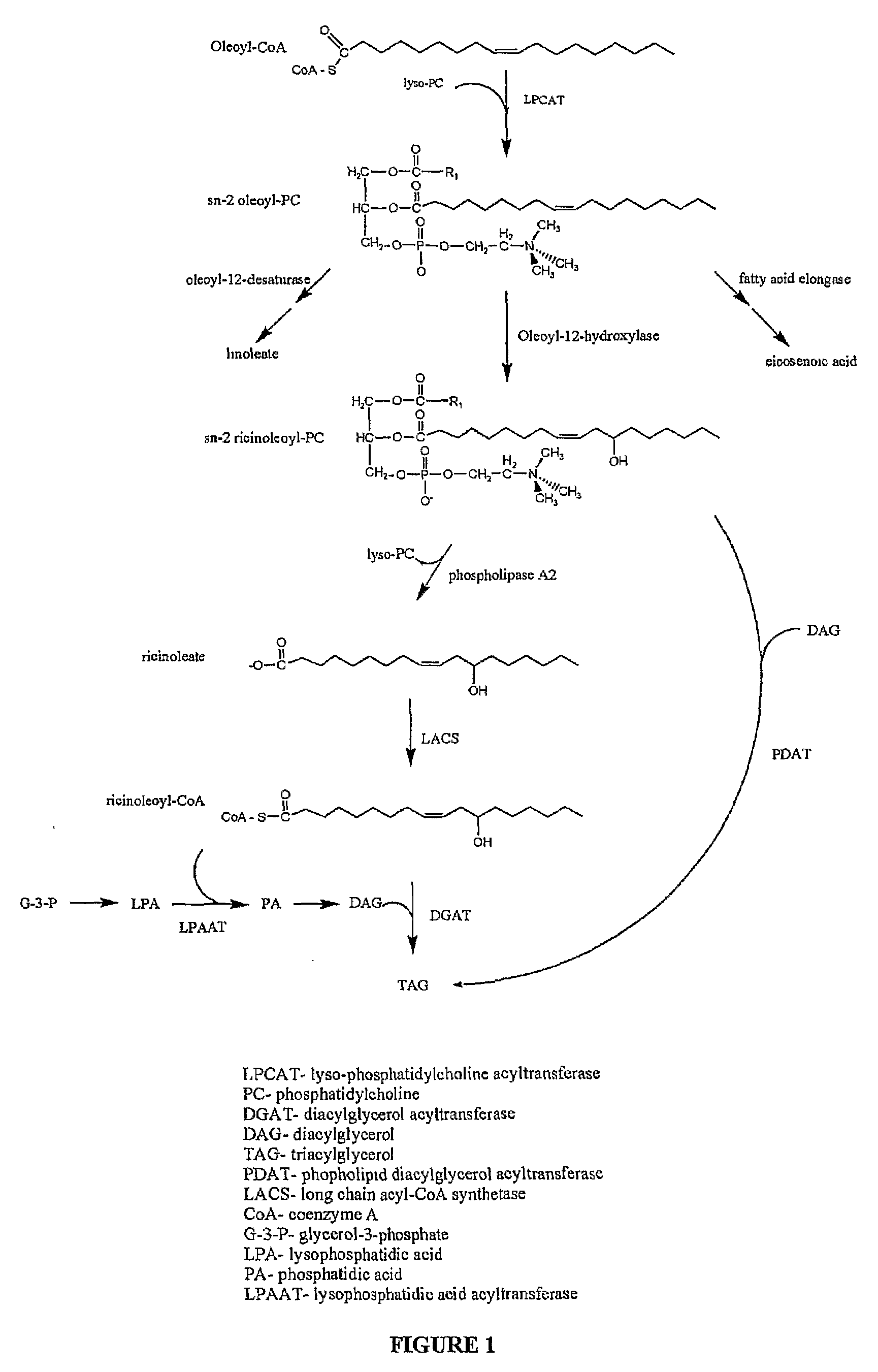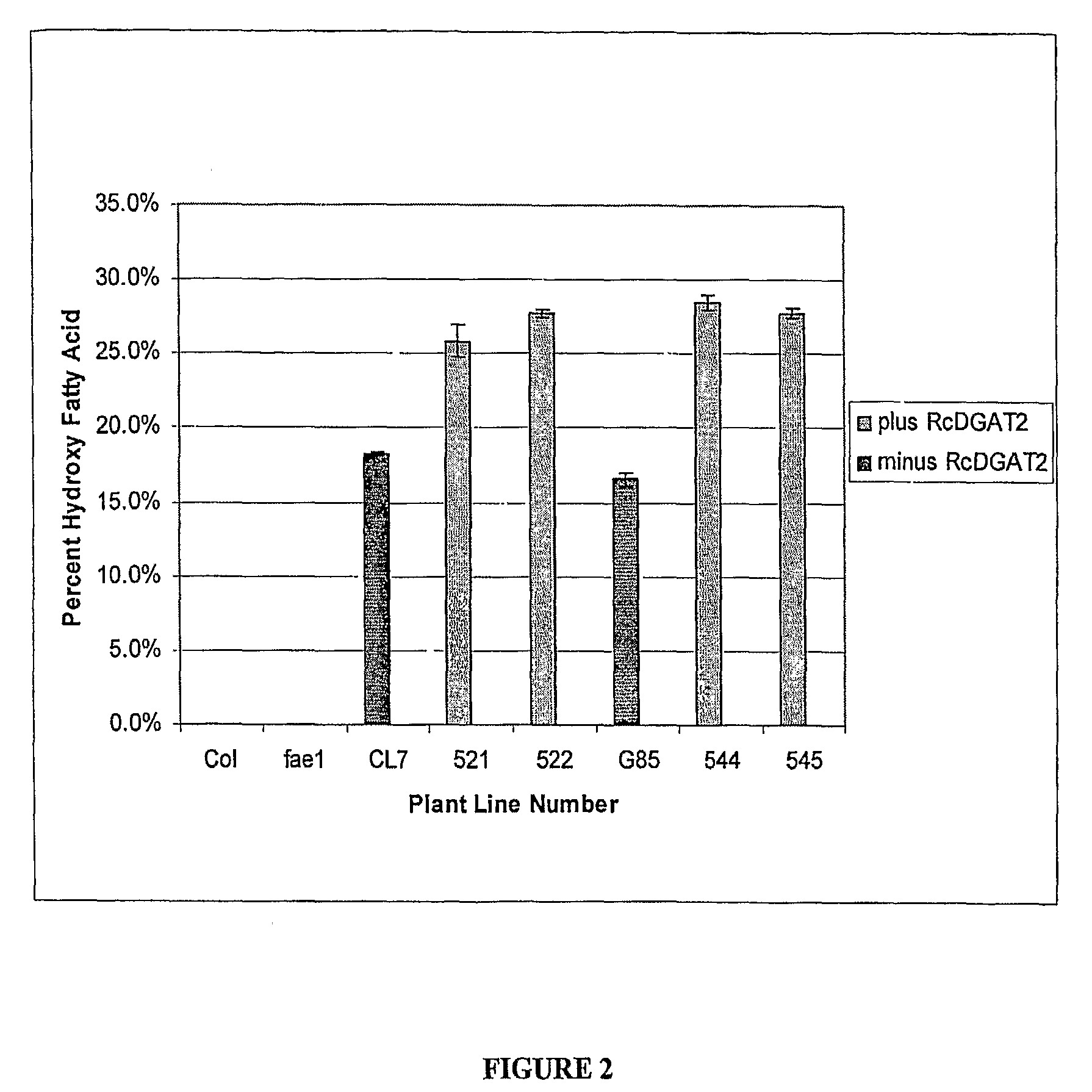Enhancement of Hydroxy Fatty Acid Accumulation in Oilseed Plants
a technology of hydroxy fatty acid and oil seed, which is applied in the field of fatty acid accumulation in plants, can solve the problems of low level of ricinoleic acid accumulation, and achieve the effect of enhancing the accumulation of hydroxy fatty acid
- Summary
- Abstract
- Description
- Claims
- Application Information
AI Technical Summary
Benefits of technology
Problems solved by technology
Method used
Image
Examples
example 1
Lipid Metabolic Genes from Castor Bean Developing Endosperm were Identified; Materials and Methods Used For Identification of Novel Castor Genes
[0161]Overview. Unaccompanied introduction of the castor bean hydroxylase cDNA can produce up to ˜17% HFA in total Arabidopsis seed lipids7-9, but no one has pushed HFA accumlulation beyond this level. In one aspect, applicants' conception is that in developing castor seed, one or more steps in the biosynthetic pathway may be catalyzed by enzyme isoforms that display enhanced specificity for ricinoleate-containing substrates, such that optimal HFA production is mediated by a coordinate group of enhanced specificity enzymes. Aspects of the present invention, therefore, identify novel additional TAG metabolic enzymes from castor bean that can breach the prior art 17% HFA accumulation barrier. A castor bean developing endosperm library was screened for genes with known or possible roles in BFA incorporation into triacylglycerol (TAG).
[0162]The ...
example 2
Plant Expression Vectors were Constructed
[0168]Full length cDNA sequences were amplified out of the full length cDNA library (see TABLE 2 above for primers used) using Pfu Ultra DNApolymerase and cloned into a seed-specific plant expression vector, pOEA2 (DOW Agrosciences).
[0169]The restriction sites used for cloning were PstI and XhoI in all cases except for PDAT1A, which had an internal PstI restriction site and AscI was used instead.
[0170]The pOEA2 vector contains a multiple cloning site driven by the seed specific promoter, phaseolin (Slightom et al., 1983). A BASTA resistance marker is also present for plant selection as well as a spectinomycin resistance gene for selection in Agrobacteriun tumefaciens (strain GV3101) and E. coli (strain DH10B).
example 3
Plant Material, Growth Conditions, Transformation and Line Selection
Methods:
[0171]Arabidopsis thaliana, Columbia (Col-O) ecotype was grown in soil in 4 inch pots maintained at 22° C. under a 16 h day and 8 h night photoperiod in greenhouse conditions.
[0172]A marker-less castor bean hydroxylase construct containing the phaseolin (Slightom et al., 1983) seed-specific promoter was developed and used to transform the fae1 Arabidopsis mutant line (AC56; Kunst et al., 1992) using the floral dip method (Clough and Bent, 1998). This resulted in a large amount of Ti seed, which was planted on soil and allowed to produce T2 seed. The T2 seed was screened for hydroxy fatty acid content using bulk seed fatty acid analysis. T2 seed from lines containing hydroxy fatty acid was then grown, resulting in T3 seed, amongst these being homozygous lines CL7 and CL37. These two seeds lines were verified to be homozygous for the hydroxylase cDNA by performing single seed fatty acid analysis as well as gro...
PUM
| Property | Measurement | Unit |
|---|---|---|
| temperature | aaaaa | aaaaa |
| temperature | aaaaa | aaaaa |
| weight | aaaaa | aaaaa |
Abstract
Description
Claims
Application Information
 Login to View More
Login to View More - R&D
- Intellectual Property
- Life Sciences
- Materials
- Tech Scout
- Unparalleled Data Quality
- Higher Quality Content
- 60% Fewer Hallucinations
Browse by: Latest US Patents, China's latest patents, Technical Efficacy Thesaurus, Application Domain, Technology Topic, Popular Technical Reports.
© 2025 PatSnap. All rights reserved.Legal|Privacy policy|Modern Slavery Act Transparency Statement|Sitemap|About US| Contact US: help@patsnap.com



